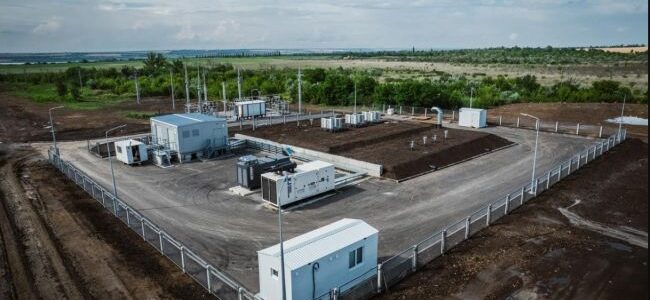
Water is already being supplied from Zaporizhzhia to the pumping and filtering station in Marhanets (the first branch), where it is purified and distributed to consumers – the Marhanets, Myrivska, Shyrokivska, and Tomakivska communities. The second branch will supply water to Nikopol, Pokrovske and Chervonohryhorivka (Dnipropetrovska oblast), said Maksym Shkil, owner of Autostrada.
Autostrada completed the construction of the water pipeline and its preparation for launch in February. All this time, they had to wait for the identification of the facility’s balance sheet holder and for a constant voltage supply.
The modern water supply system is fully automated and computerized, and is now fully powered by a constant power supply. A centralized control room for the entire water supply system has been set up, based on modern automation equipment and data transmission systems. This minimizes the involvement of operational staff and increases the reliability and efficiency of the water supply system.
Autostrada built the main water supply system from scratch in 7 months – from design to implementation. This is a record-breaking time. It takes up to a year and a half to develop projects of this level. We didn’t have this time, given the humanitarian catastrophe in which the region found itself due to the explosion of the Kakhovka hydroelectric power plant.
At the same time, we were designing, obtaining technical specifications, approvals and permits, and building the project – designers, surveyors, and builders worked in parallel and in a coordinated manner – directly at the site, 24/7!
These were extremely difficult tasks, but we solved them!
The length of the network is 77.9 km. The design capacity of the water supply system is 150,000 m3 of water per day. It was important to ensure water intake from the Dnipro, the largest Ukrainian river with a constant inflow of living water. Since access to the Dnipro riverbed is limited in many areas due to constant enemy shelling, it was decided to take water from Zaporizhzhia, a large industrial city with a difficult terrain. The designers were actually drawing the routes based on maps, as the survey would have taken a lot of time. And only after the route was laid did they refine it with geodesy. Pipes were laid where it was impossible to do so in an open way, and under roads, railways and rivers, punctures were made using horizontal drilling – a drilling rig drills a well into which a steel pipe casing is pulled, and then a fiberglass pipe is pulled into the casing.
The facility has built:
– 6 water pumping stations. Each pumping station is equipped with four powerful pumping units (from 315 kW to 800 kW). The volume of water that can be pumped by the pumps is up to 3300 m3 per hour,
– 46 “Plunger” chambers (for bleeding air in the network),
– 47 “Outlet” chambers (for draining water from the system),
16 switching chambers (for switching the water flow in the system between the pipeline lines),
– 3 meter chambers,
– 1 distribution chamber (for distributing water flow between networks – from 800mm to 500mm/700mm).
To ensure power supply to the water supply system, a total of 26 kilometers of main and backup power supply lines of 6kV and 35kV networks were constructed, and transformer substations with a voltage of 6/0.4 kV and 35/0.4 kW were equipped at each water supply system.
To ensure uninterrupted power supply, 2 diesel generators with a capacity of up to 1 MW were installed at each substation as an alternative (backup) power source.
Fiberglass pipes made of fiberglass-reinforced polyester were used in the construction of the water supply system. Such pipes can withstand pressures of up to 26 atmospheres, are lightweight and durable, and are more resistant to high temperatures and chemicals.
To protect the water supply system from shelling, almost the entire system of main pipelines and pumping stations was hidden underground.
Upon completion of the work, the roads used by the construction equipment were repaired, the territories were landscaped and planted.
In the absence of timely financing, the construction was carried out using the company’s credit and working capital. Despite the water pipeline’s one hundred percent completion in February, the state’s debt to Autostrada for this facility alone is UAH 1.5 billion.